Model Canoe With Figurehead And Paddles Item Number: E21595-0 from the National Museum of Natural History
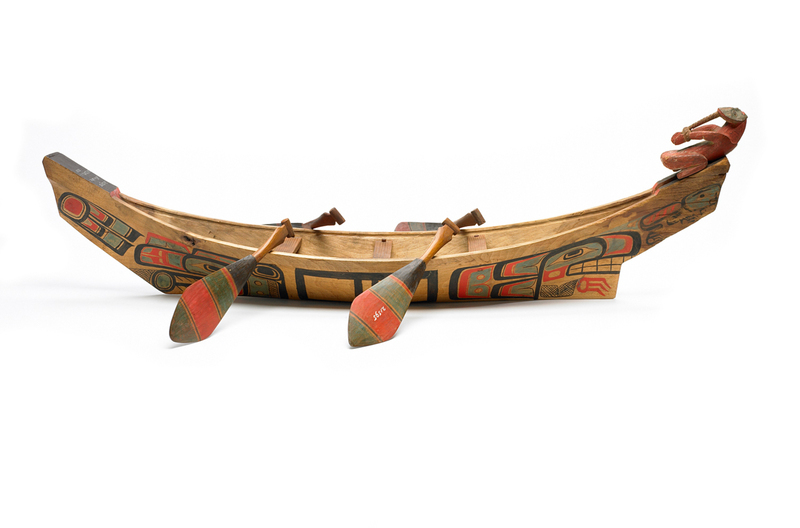
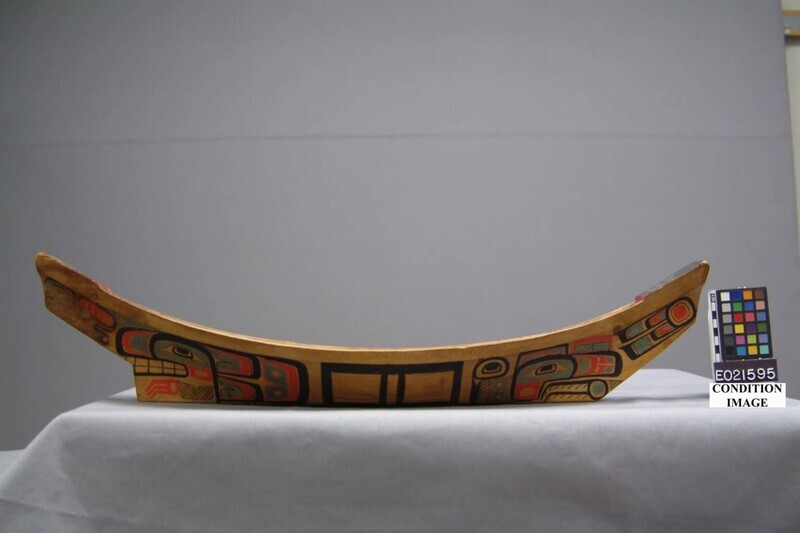

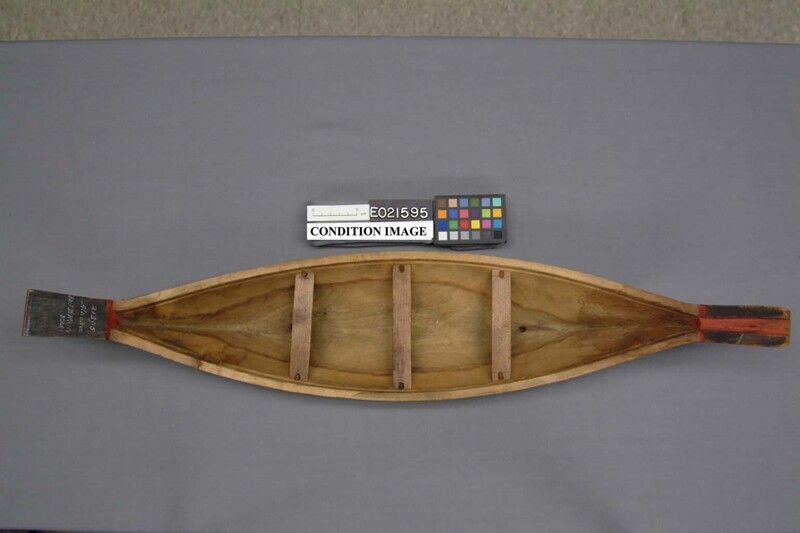
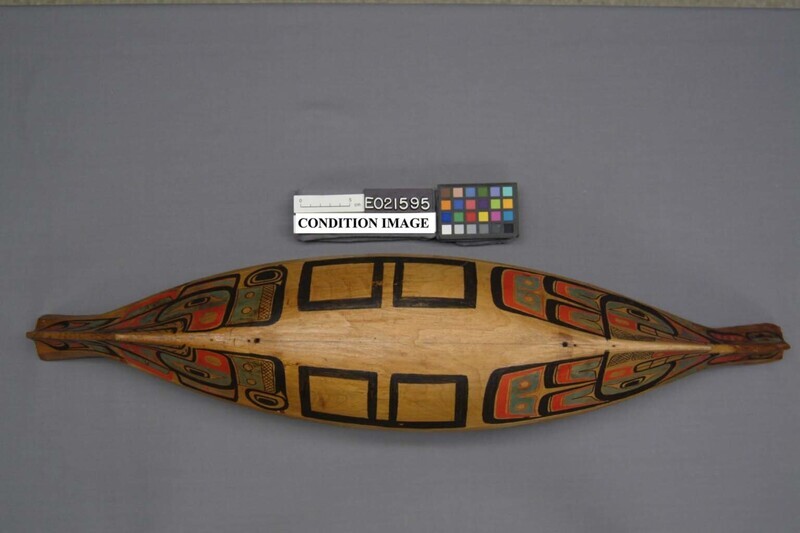
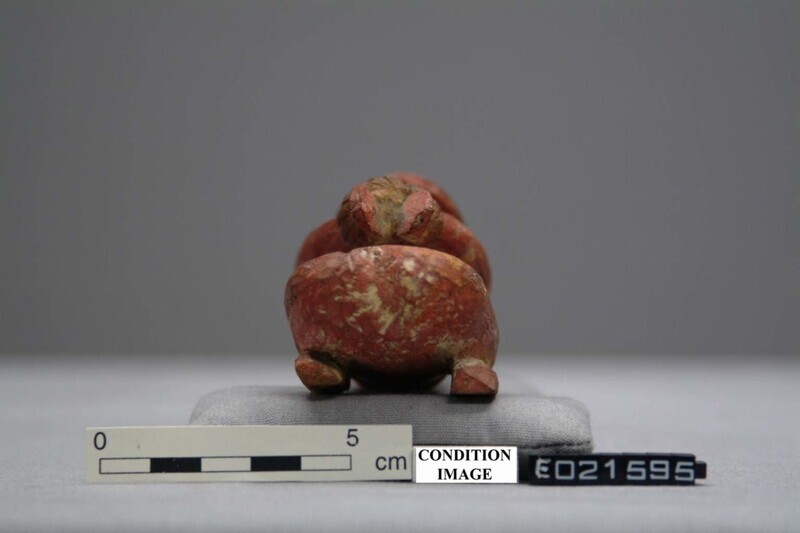
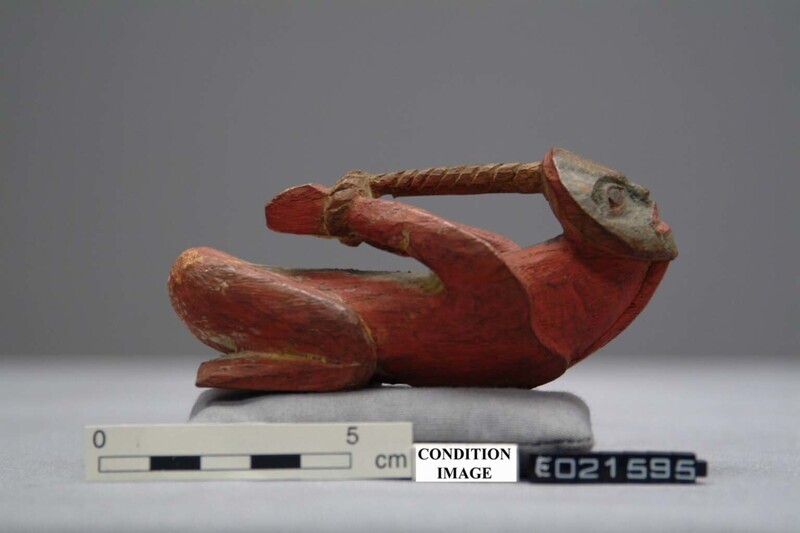
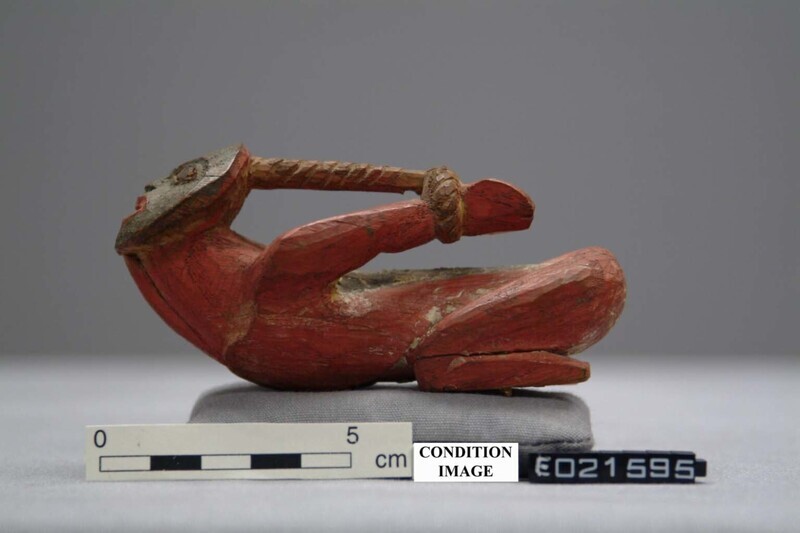
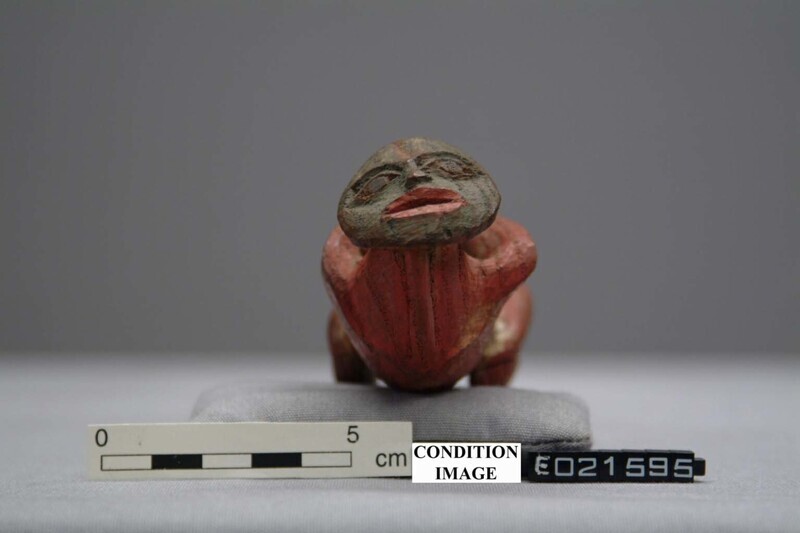
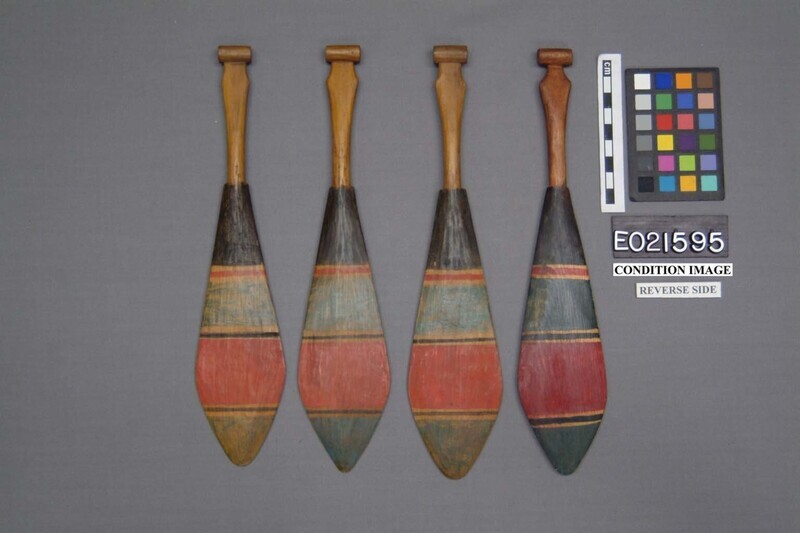
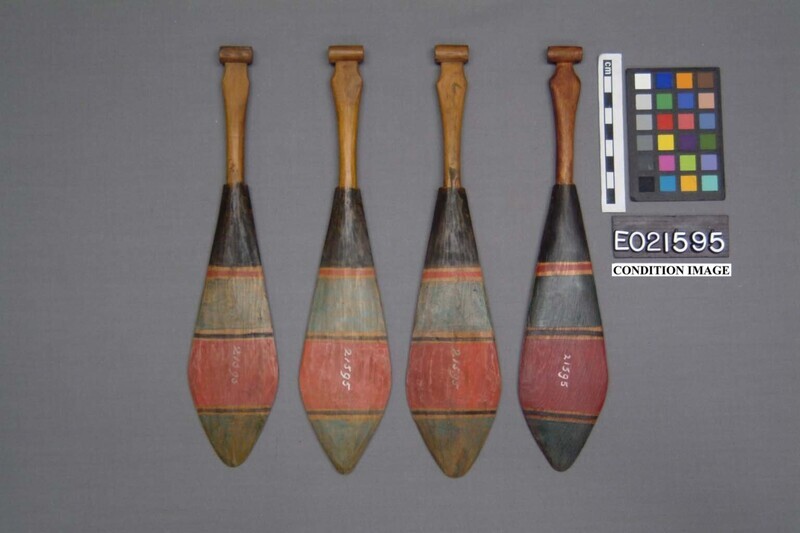
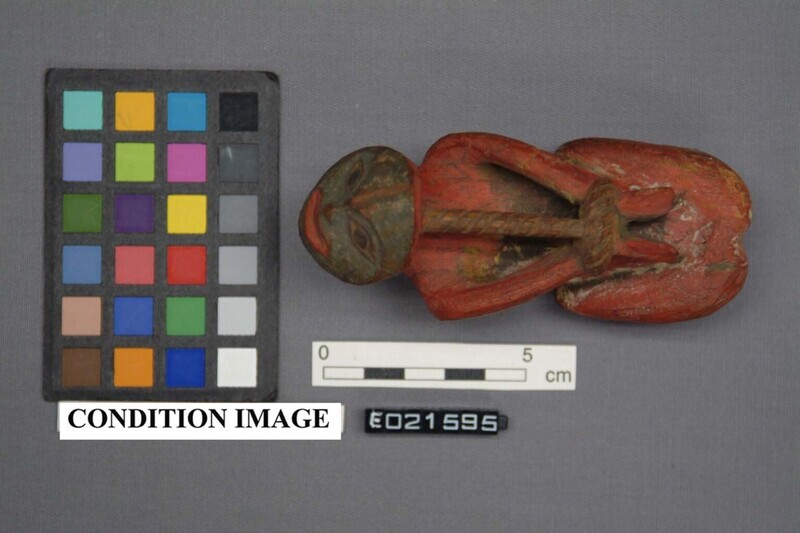
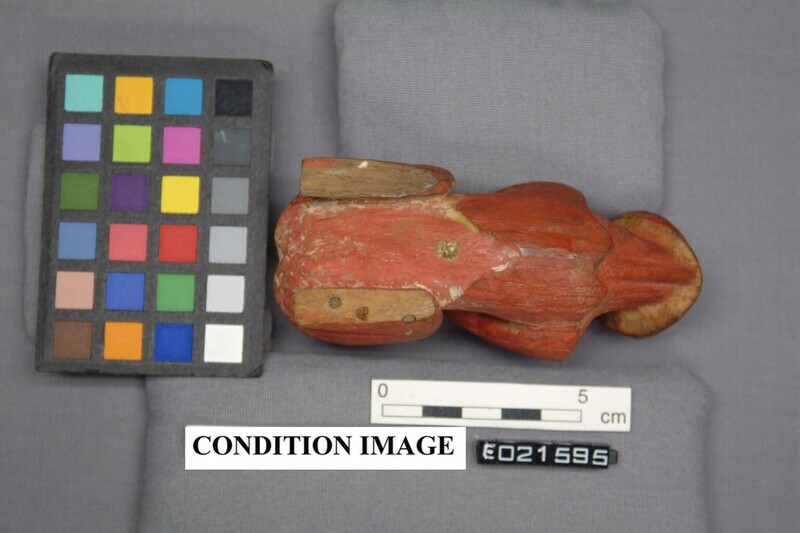
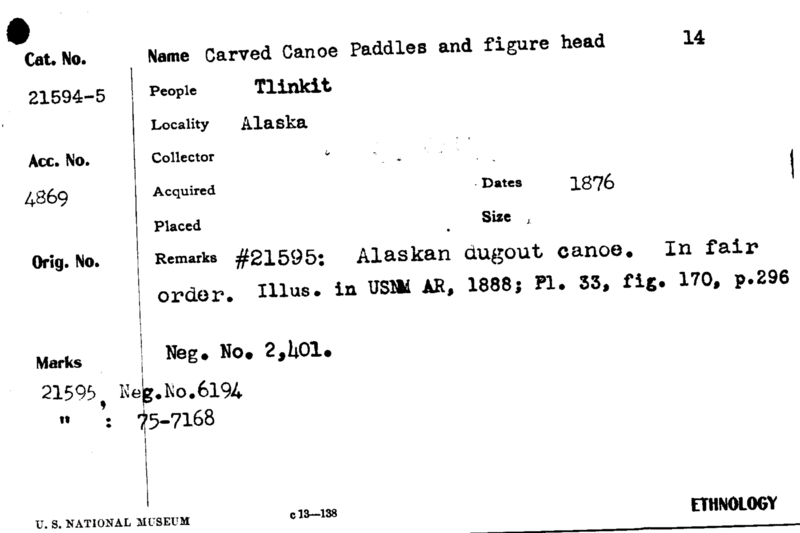

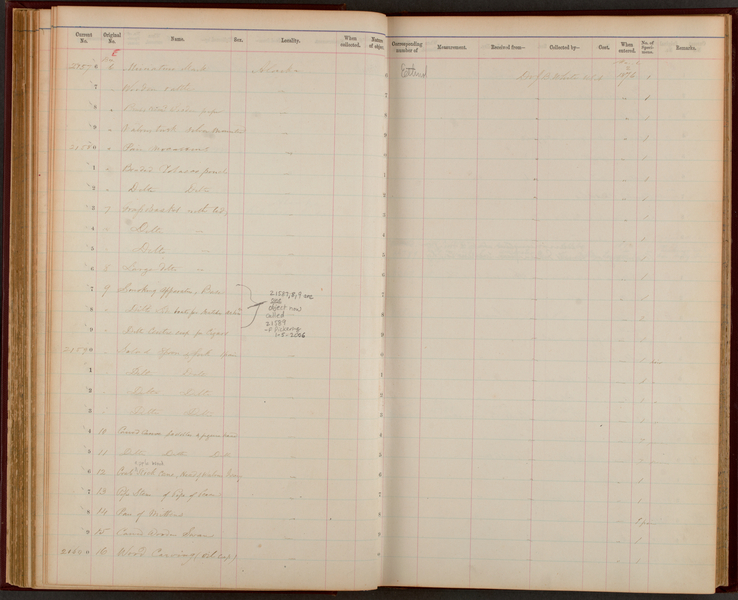
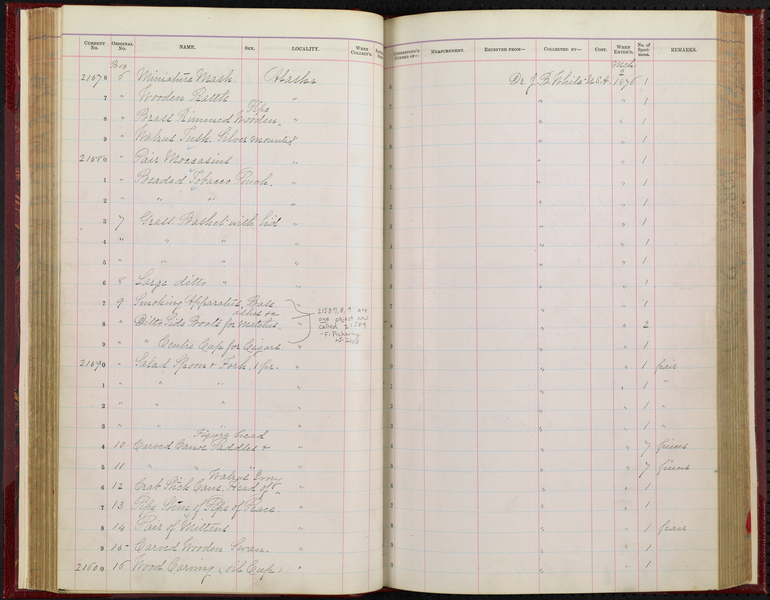
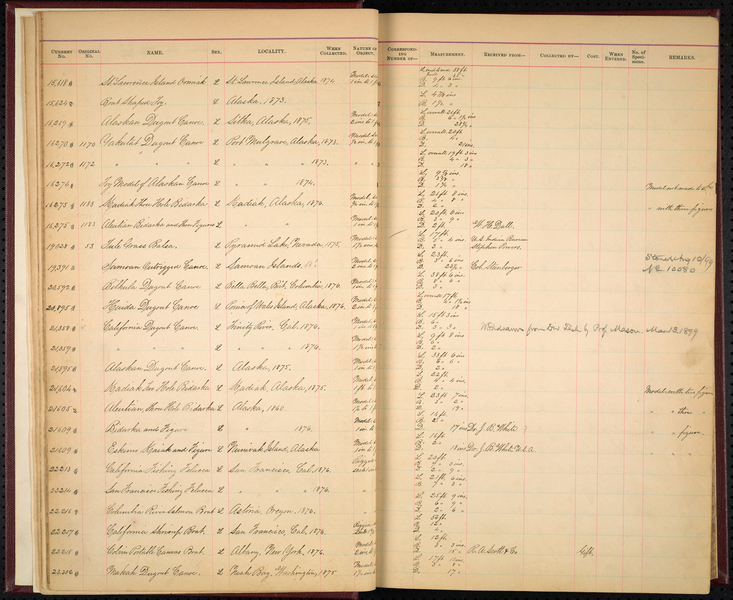
Notes
FROM CARD: "21594-5. #21595: ALASKAN DUGOUT CANOE. IN FAIR ORDER. ILLUS. IN USNM AR, 1888; PL. 33, FIG. 170, P. 296. NEG. NO. 2,401. LOANED TO THE S.I. CENTENNIAL COMM. 7-9-75 (#21595). LOANED RETURNED MAR 22 1990. " FROM 19TH OR EARLY 20TH CENTURY EXHIBIT LABEL WITH CARD: "SMALL FAMILY OR SUMMER CANOE. FOR FISHING, HUNTING, ETC. ORNAMENTED WITH TOTEMIC DESIGNS. THIS ORNAMENTATION WAS FORMERLY PUT ON ALL CANOES, BUT IS AT PRESENT SEEN ONLY ON MODELS. TLINKIT INDIANS (KOLUSCHAN STOCK), SITKA, ALASKA. 21,595. COLLECTED BY DR. J. B. WHITE, U. S. A."In 2008, the canoe bow/prow figurehead was missing from this canoe model. A figure found in storage, which had been called ET9989-0, appears to match the photo of the figure as shown in Pl. 33, Fig. 170, p. 296 of USNM 1888 AR, and so it has been given number E21595. Upon close examination, it was found to have the number 21595 written on it, thus confirming the identification.This object is on loan to the Anchorage Museum at Rasmuson Center, from 2010 through 2027. Canoe includes 4 paddles and figurehead in position on bow on loan.Source of the information below: Smithsonian Arctic Studies Center Alaska Native Collections: Sharing Knowledge website, by Aron Crowell, entry on this artifact http://alaska.si.edu/record.asp?id=534 , retrieved 12-30-2011: Canoe model Large "war canoes" with projecting bows and high sterns were up to sixty feet long, with room for many passengers and thousands of pounds of gear and supplies. They served for coastal travel, trade, war, and relocation to seasonal camps. Haida men carved the canoes from tall cedar trees that grow in the Queen Charlotte Islands and traded them to northern neighbors. Elder Clarence Jackson said, "It was a sign of wealth when you had a Haida canoe." They were painted with clan crests – on this model, a bear on the bow and a bird figure on the stern.
Item History
- Made in Sitka, Baranof Island, Alaska, USA
- Collected by Dr. John B. White in Sitka, Baranof Island, Alaska, USA
- Received during 1876
What
- Name
- Model Canoe With Figurehead And Paddles
- Identification Number
- E21595-0
- Type of Item
- canoe model and paddle model
Who
- Culture
- Tlingit
- Field Collector
- Dr. John B. White
Where
- Holding Institution
- National Museum of Natural History
- Made in
- Sitka, Baranof Island, Alaska, USA
- Collected in
- Sitka, Baranof Island, Alaska, USA
When
- Acquisition Date
- during 1876
Other
- Accession Number
- 004869